Lindar it's a village near the small city called Pazin, in the central part of Istra, about fifty-sixty kilometers from where I live.
Here you can see the house called villa Baxa, the most iconic building in the village ...
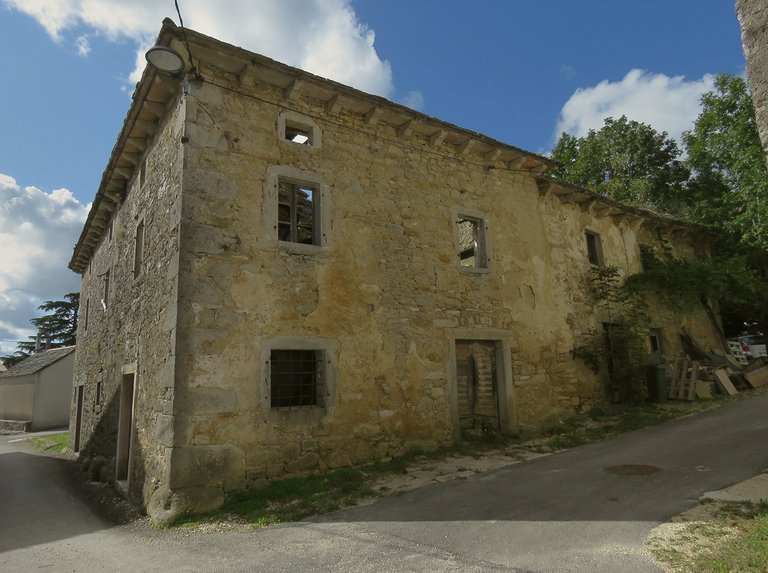
... considerably different from the simpler rural houses ...
... and homesteads around it.
The villa was built in the last decades of the 19th century by Romano Baxa, an admiral of the Austro - Hungarian empire, and a doctor by trade.
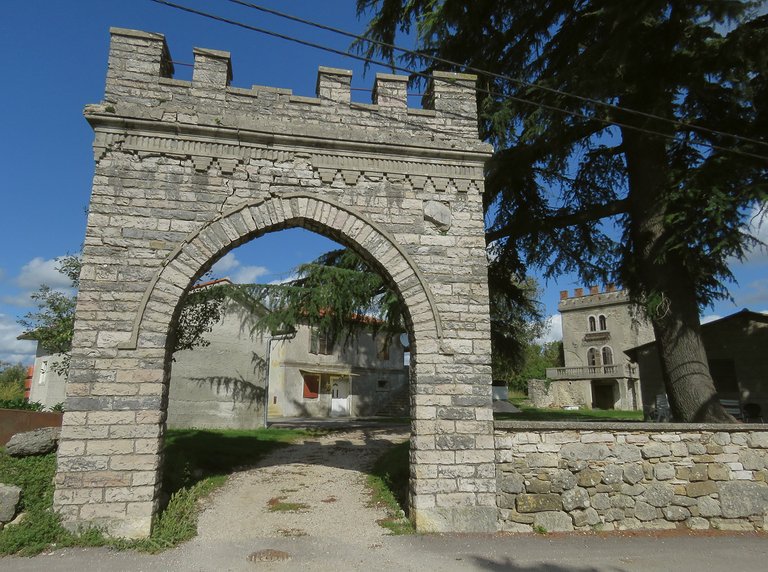
This is a pretty monumental arch at the entrance of the property.
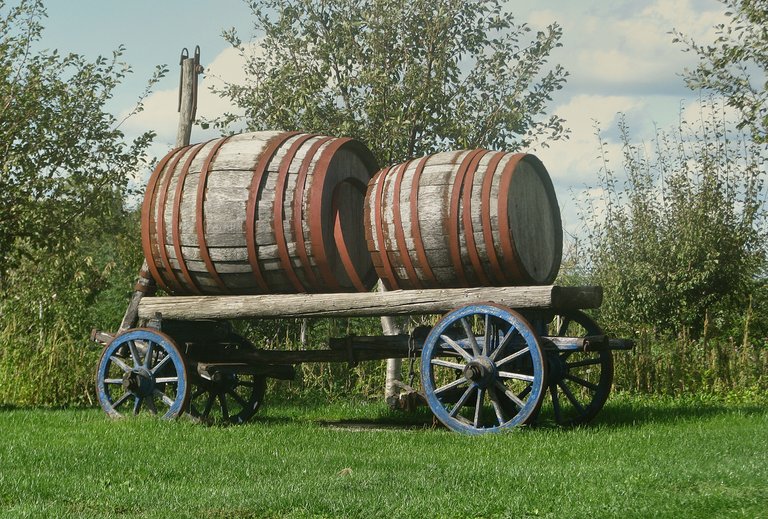
When I entered the large yard, back then on 6th October 2020 ...
... chickens were guarding the place.
In the last two decades, chickens have become a rarity in my hometown. You can see them only as packaged meat in the supermarket or butchered in the
butcher's shop. Sometimes I hear the rooster crowing in the distance, somewhere on the outskirts of town. It sounds more like a morning echo of my own dream than the reality. There are no chickens in my neighborhood ...
... so I usually take plenty of chicken portraits when I encounter them somewhere else.
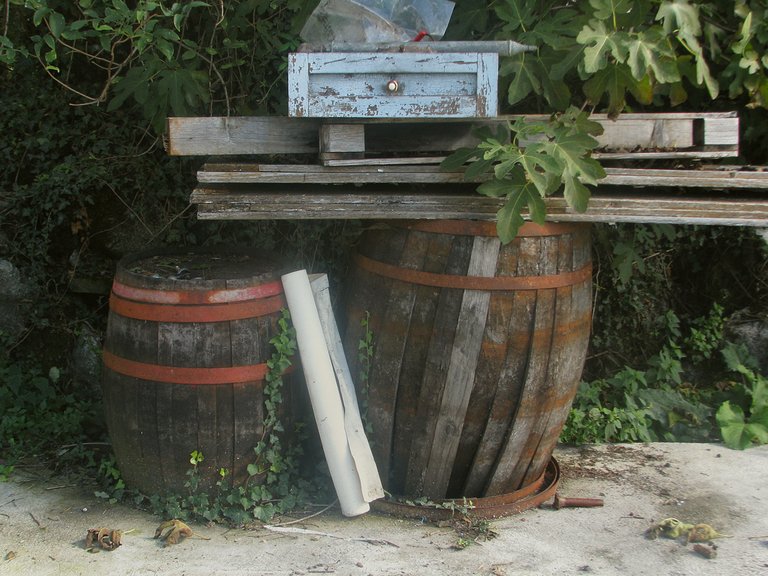
Here you can see a nice pile of old stuff displayed in the yard. Two old barrels, an old drawer, and some other objects that I wasn't able to identify just by watching the photograph.

This white chicken ...
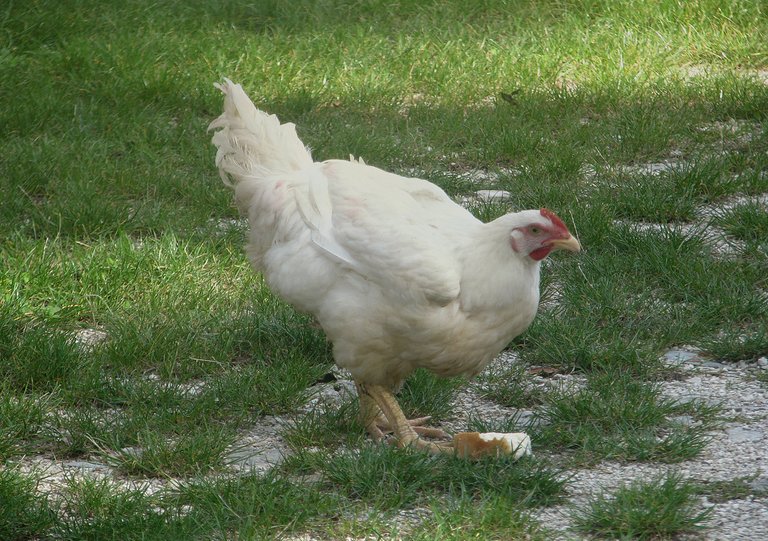
... has found a nice slice of bread.
Here you can see a very different kind of animal. The winged lion on the facade of the villa. The petrified creature is a symbol of the Venetian Republic. The aforementioned doctor-admiral Romano Baxa was a high-ranked official of the Austro-Hungarian empire but was also an Italian, so he placed this homage to Venice on the facade of this rural residence in which the old Admiral lived after the retirement.

I passed by the villa and walked out of the yard ...
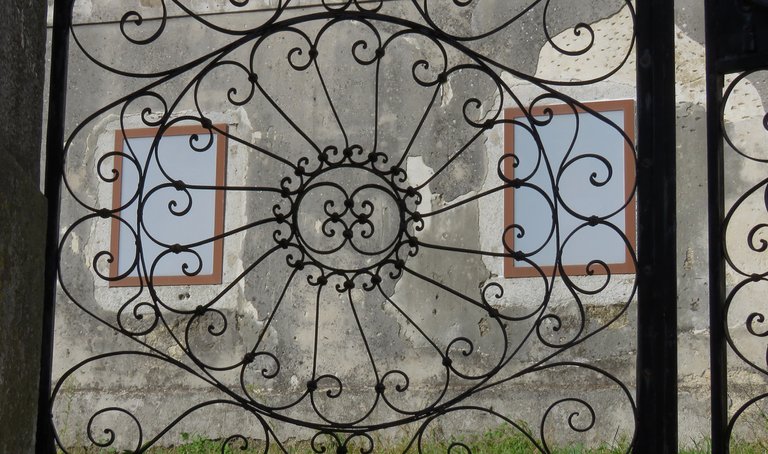
... through a smaller, backyard entrance ...
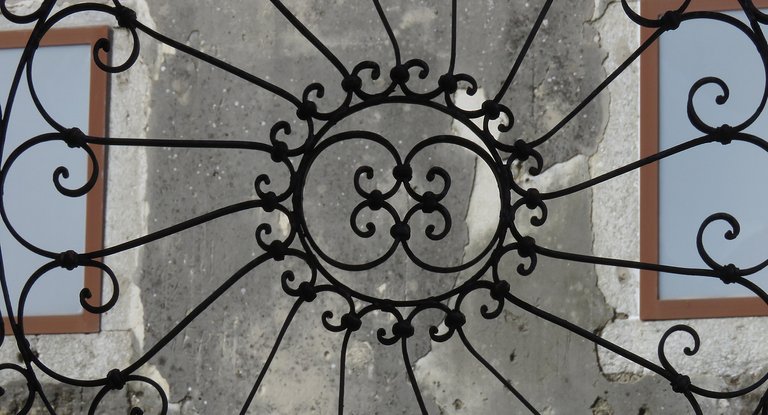
... through a gate with some nice antique ironwork.
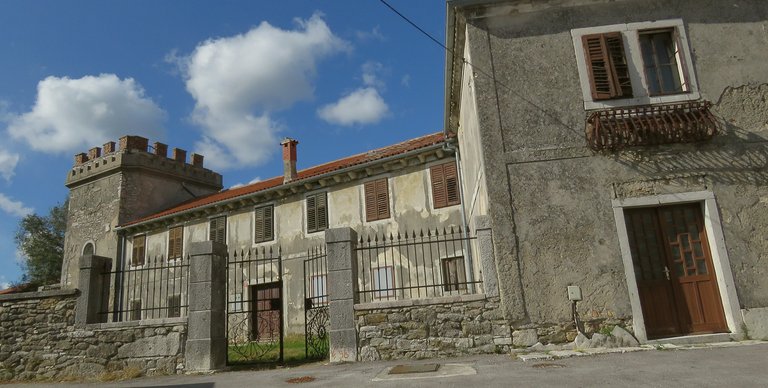
I took this photograph from across the street. You can take a look at the villa from a different place and angle.

Here you can see a house on the outskirts of the village. I took this photograph to catch the tractor passing by. The house is only collateral scenery.
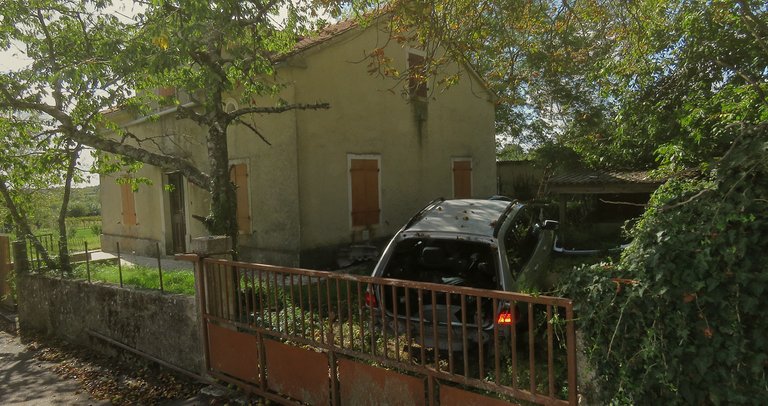
This is a look at the same house but from a different spot across the street.
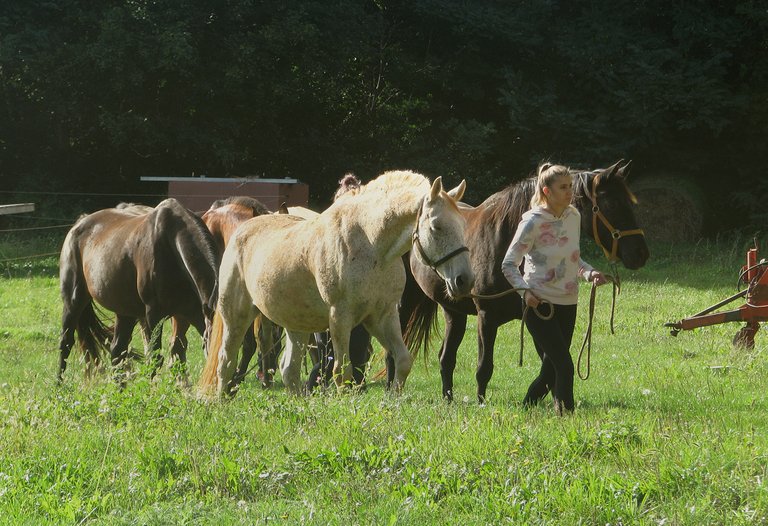
About a hundred meters from there, in the fields around the village, a girl was leading a bunch of horses.
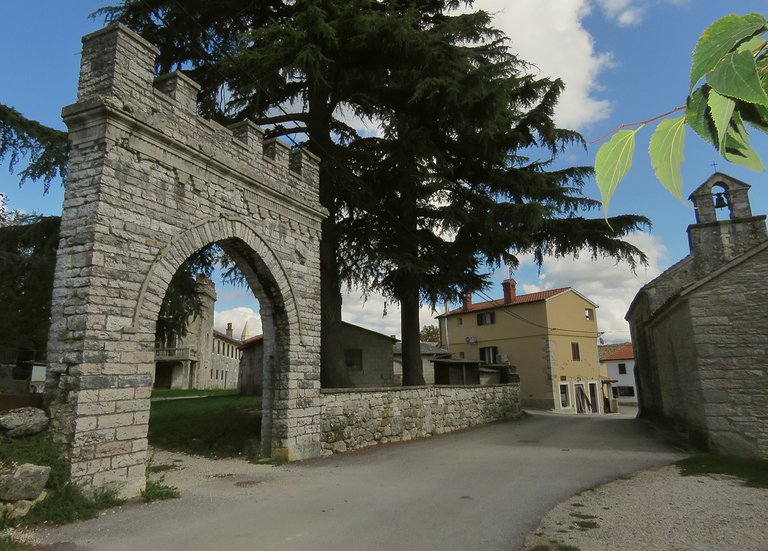
In this photograph, I'm near the main entrance to the Baxa property again. From there, I'm about to walk to the church that you can see on the right edge of this shot.
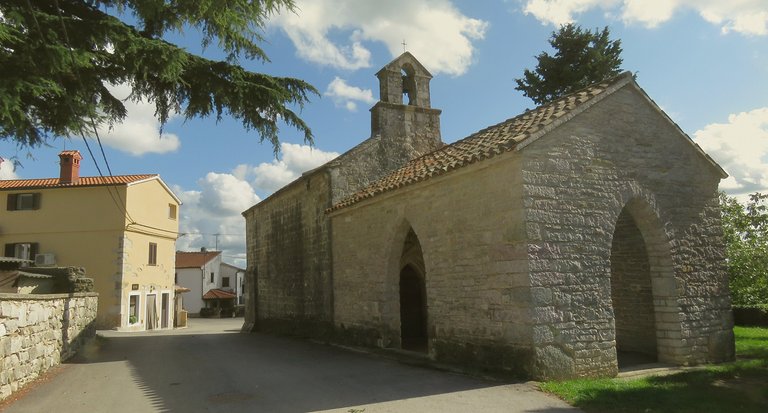
The Church of St. Catherine was built long ago.
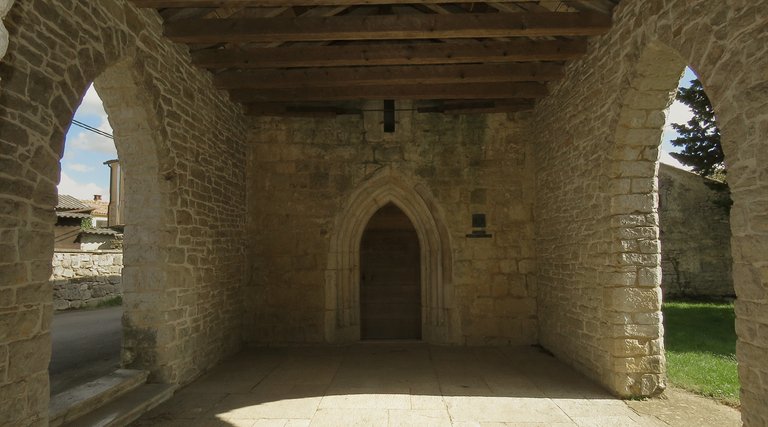
In 1392.

This was the local parish church until 1860.
The weather on 6th October 2020 was mostly sunny. But the clouds were also present, sparsely scattered across the sky. The light was changing frequently. Which is good for photography. There is always some visual action around, even when everything else is still.
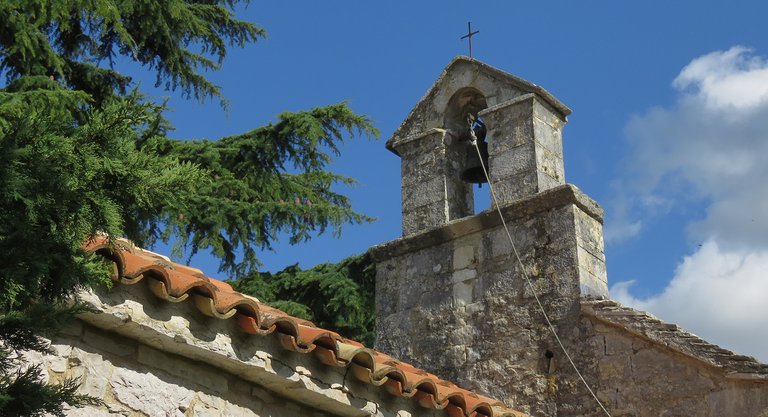
Historically and culturally, this is the most important piece of architecture in Lindar ...
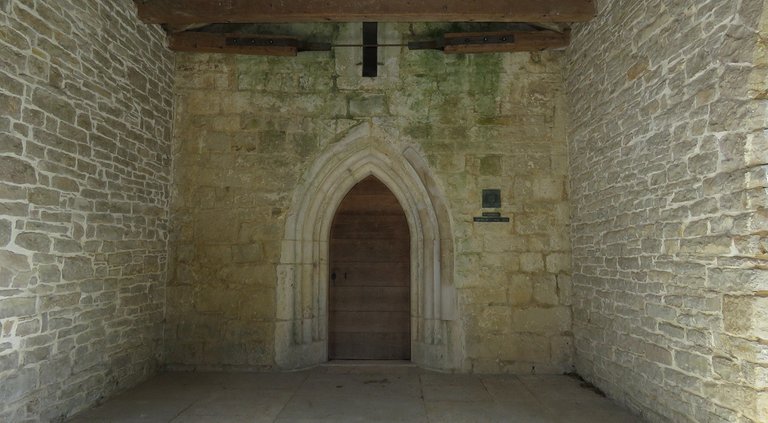
... but isn't the biggest church there.
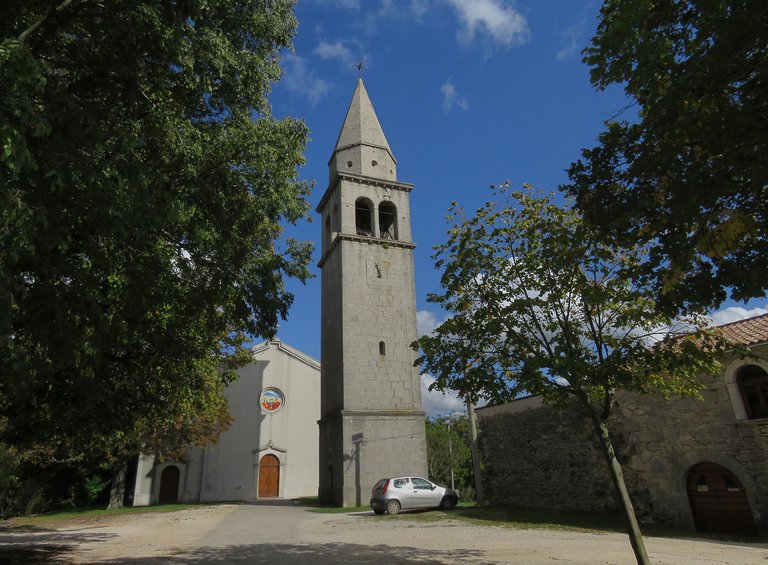
The Church of St. Mohor and Fortunato is the current parish church. It was built in 1606, on the plateau where an older church once stood. Iz was made bigger in 1860, and that is the year in which the building got its definitive look and size. The 30 meters tall bell tower was built in 1906.
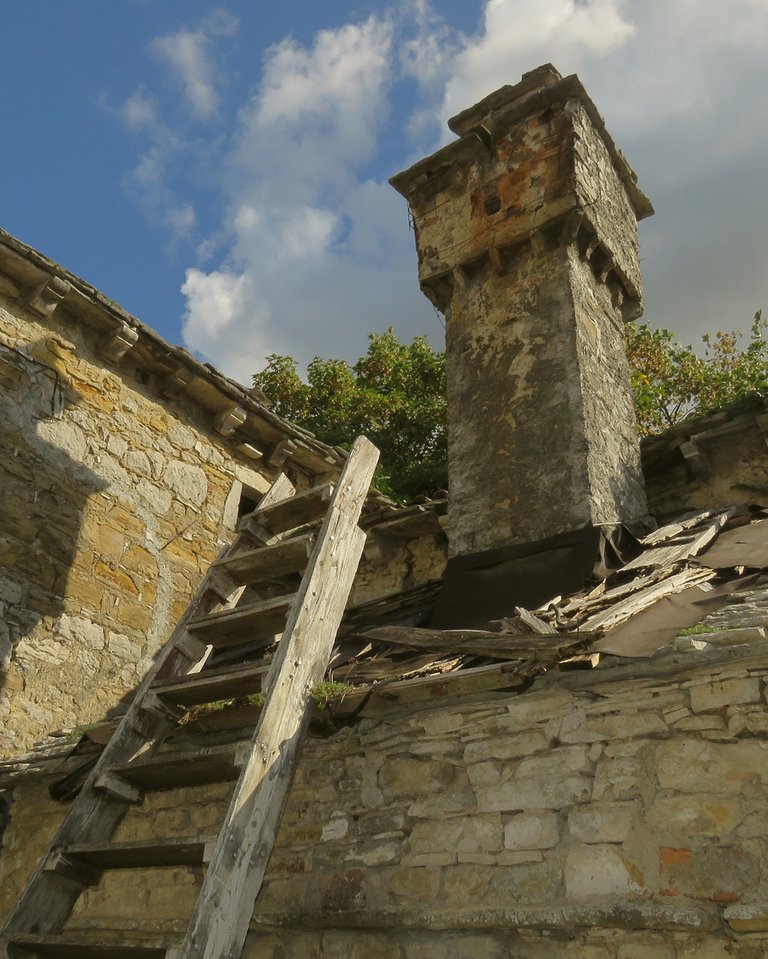
Here you can see a unique old chimney ...
... part of a photogenic old homestead that I like very much.

I found quite a few lovely details around that place ...
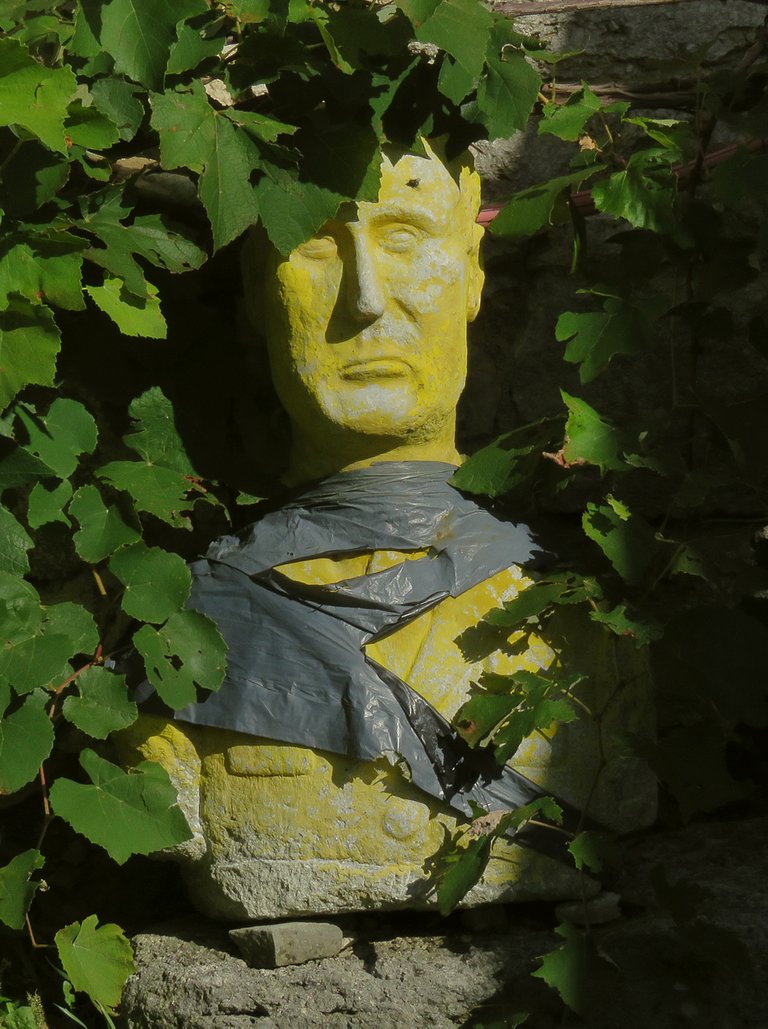
... this petrified dude, which doesn't seem very happy ...
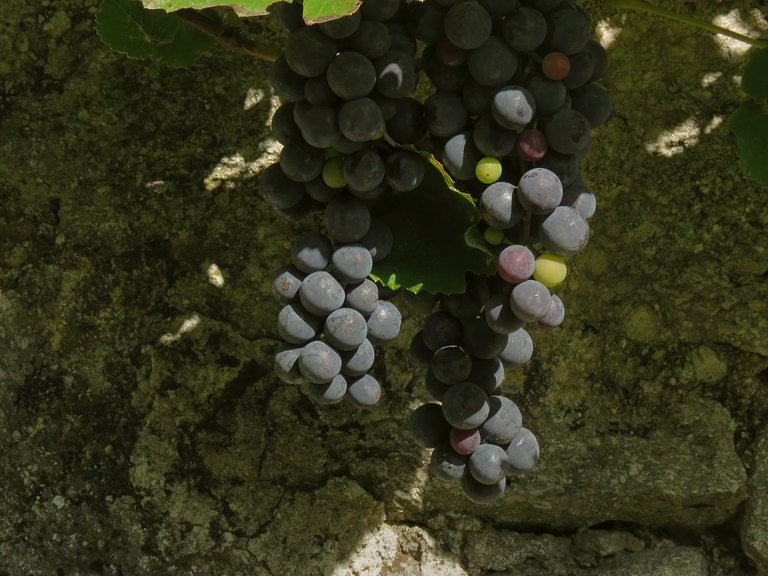
... and a bit of grape ...
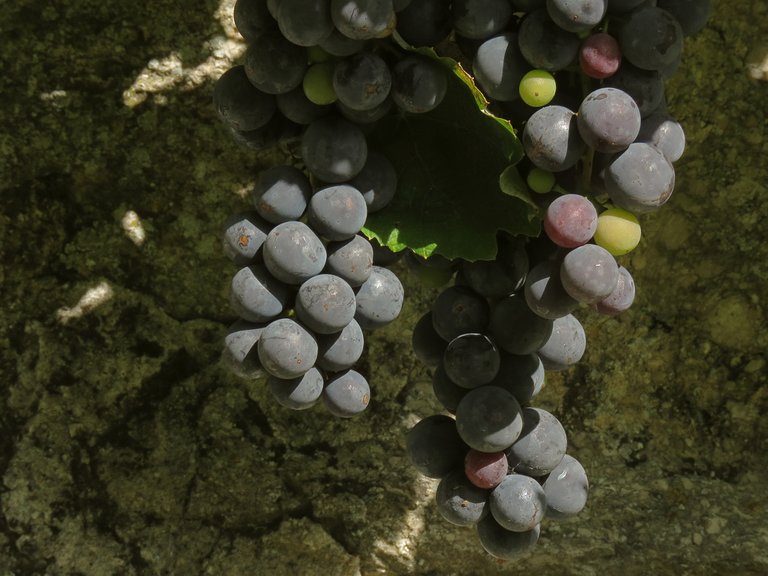
... juicy black Strawberry grape.
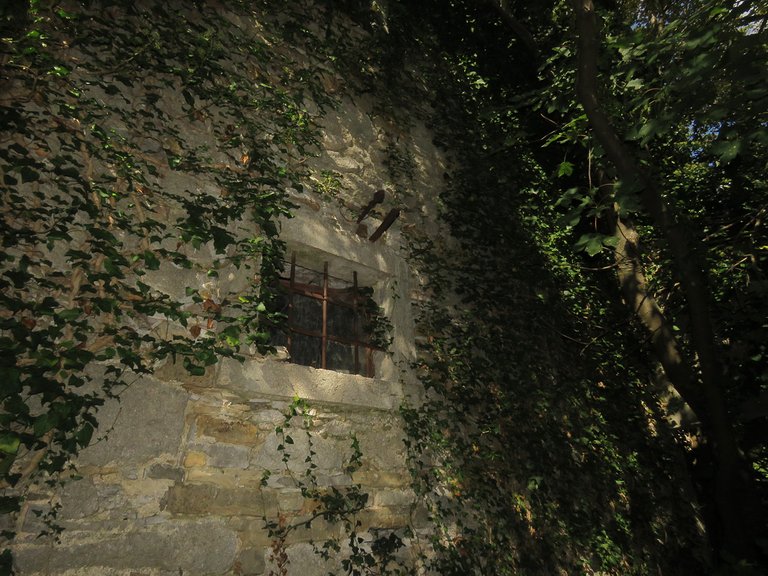
Parts of the homestead were covered with ivy.
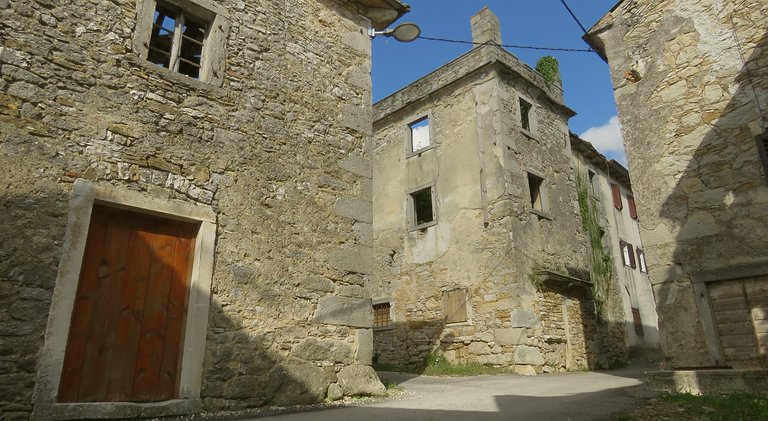
Here you can see a group of old houses not far from the main church.
This part of the village looks pretty cool in photographs.
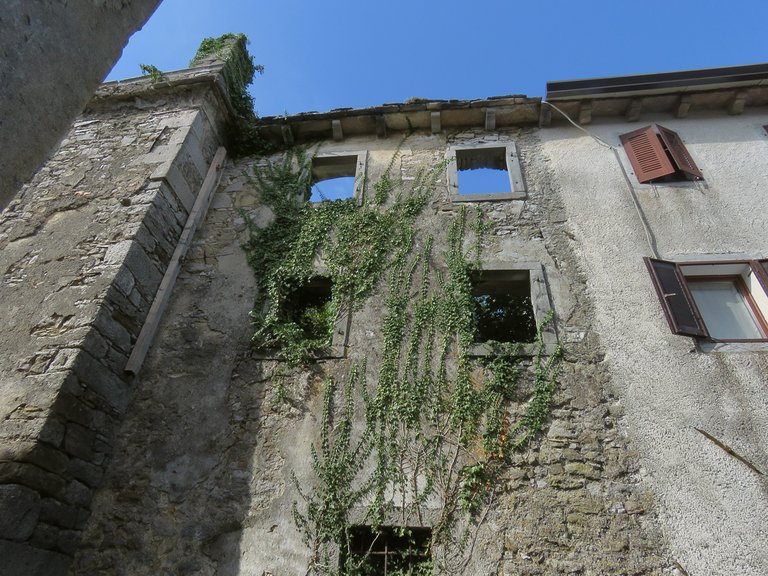
Old abandoned houses and the ivy get together very well.
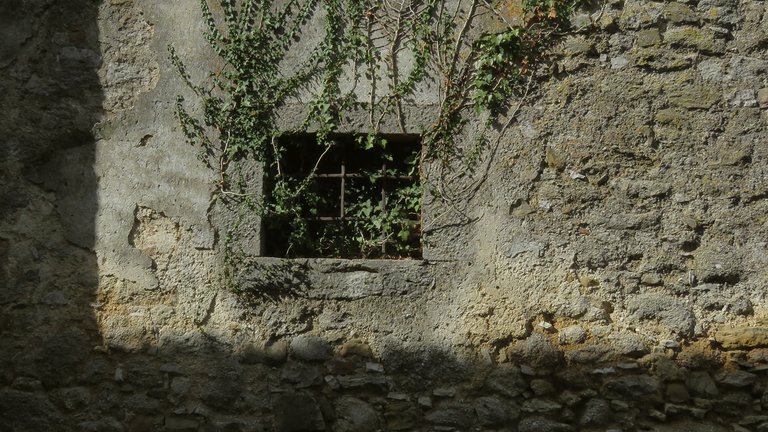
And all that stuff gets well together with photography.
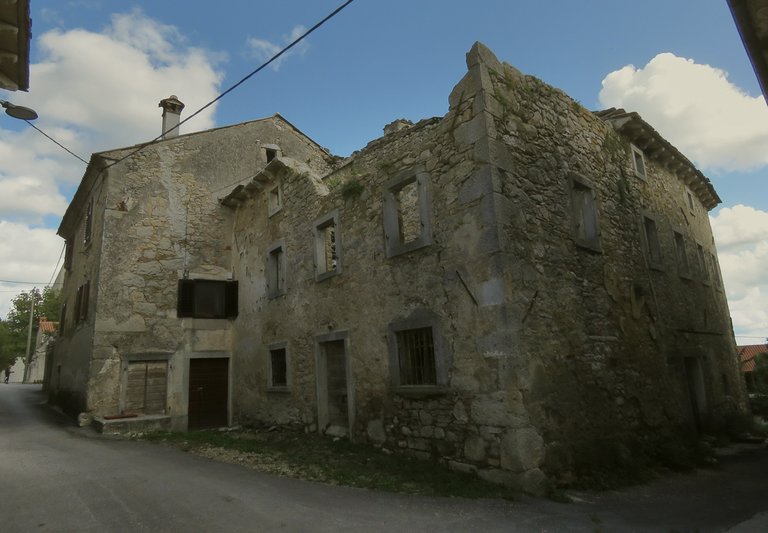
The disc of the sun was hidden behind a white cloud that looked like whipped cream when I took this photograph. A moment later ...
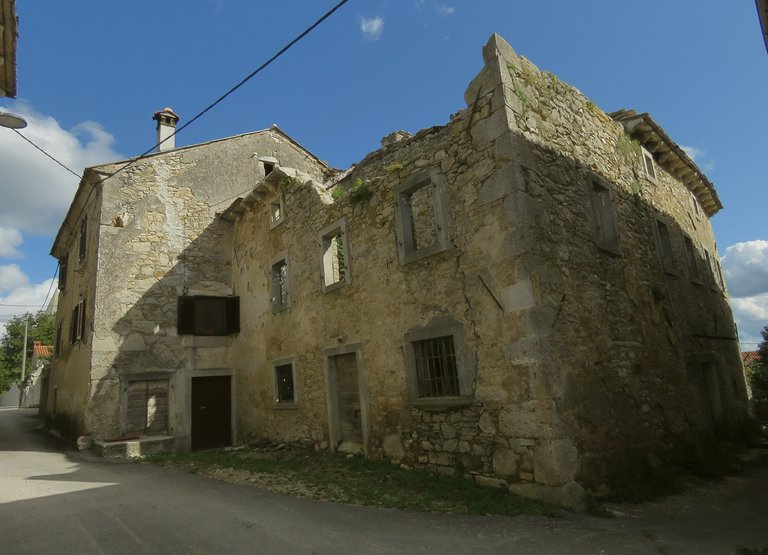
... the light changed.
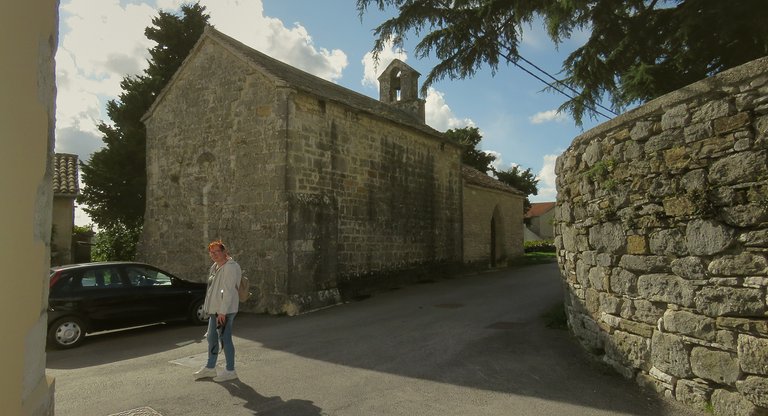
This place was inhabited since prehistoric times. Lindar as we know it now wasn't there, of course. But archeological findings show that there was always some action around this area.
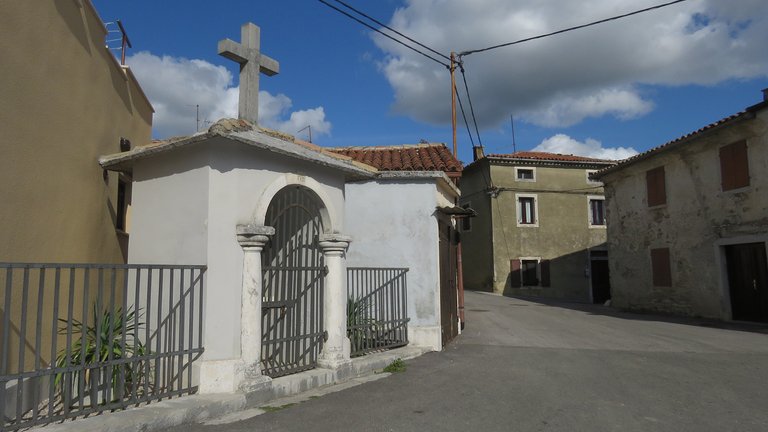
In some periods, probably more action than now.
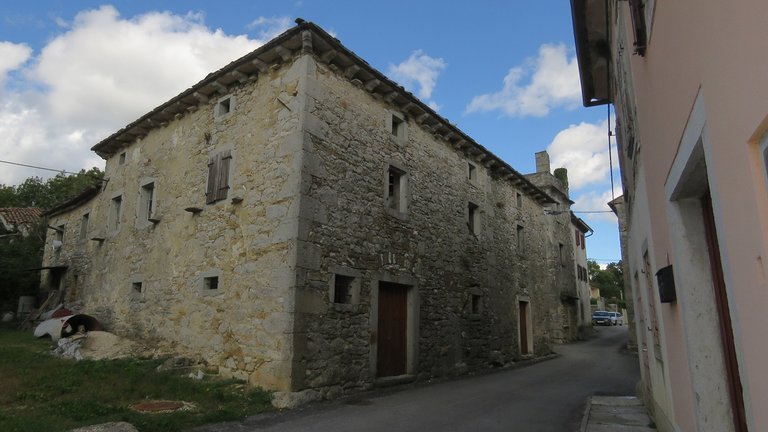
In written sources, Lindar is first time mentioned in 1283, when a bishop called Bonifatzie from the city called Porech gave some mill to the feudal property near the city of Pazin, the property called Lindar.

During the middle ages, Lindar functioned also as one of the fortresses around Pazin, the city situated in the deep valley not far from there.
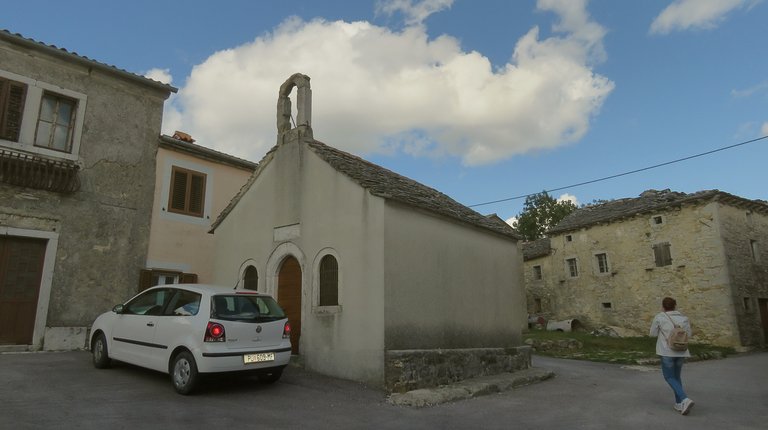
Here you can see the small church of St. Sebastian. It was built in 1559, commissioned by a Lindar's resident. The inscription on the facade states that the name of that resident was Ivan Jedrejchich.

On 4th September 1813, there was a battle in the fields under the village, which was more like a real town back then. The French army was defeated and the whole peninsula was soon back under Austrian rule.
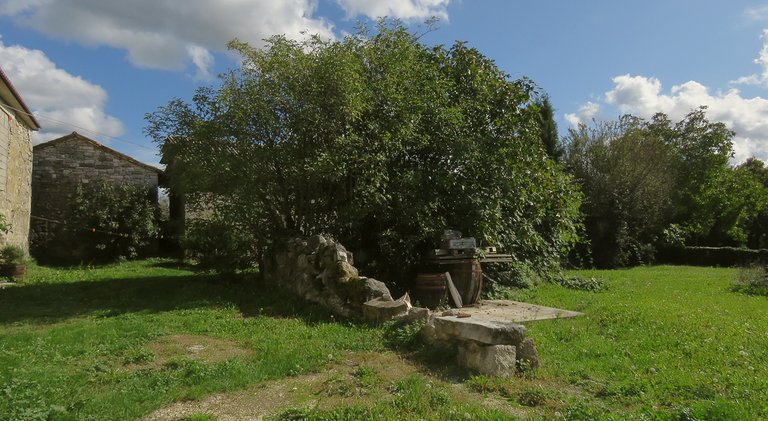
On 6th October 2020, I spent an entire afternoon there. This doesn't look like an important part of history, and in fact - it isn't. But is history nonetheless.
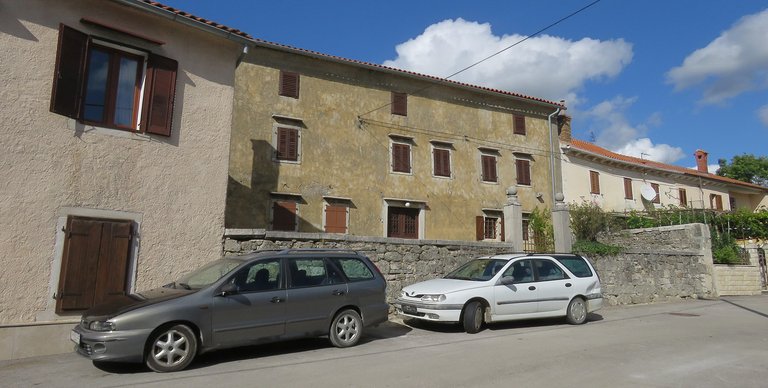
I don't know what else to say. I mean, not only about my insignificant place in Lindar's history but in general.
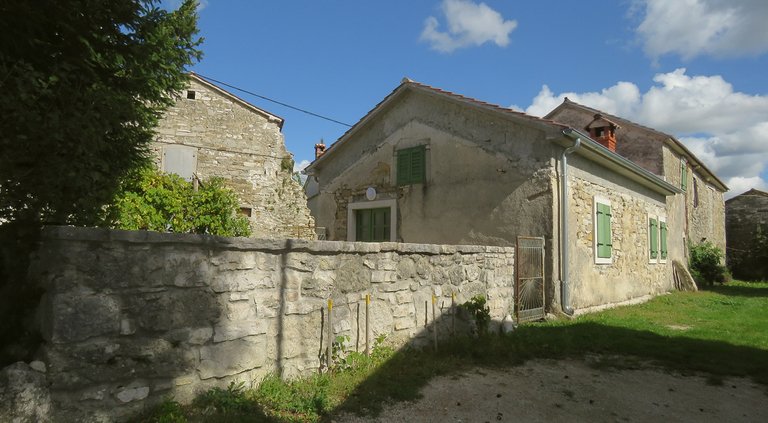
I have some more photographs to show ...
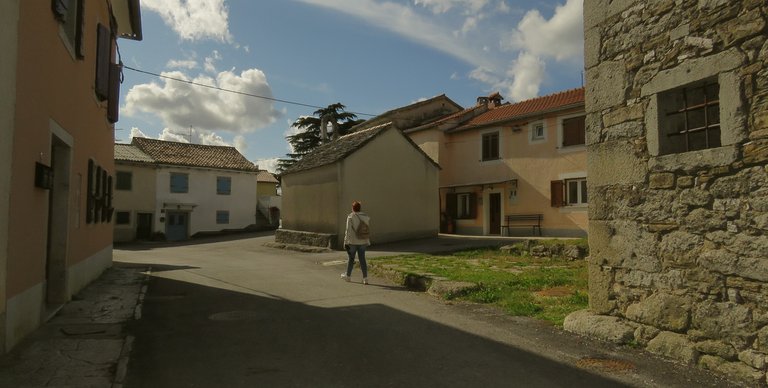
... but I also have no idea about what to write from here on.
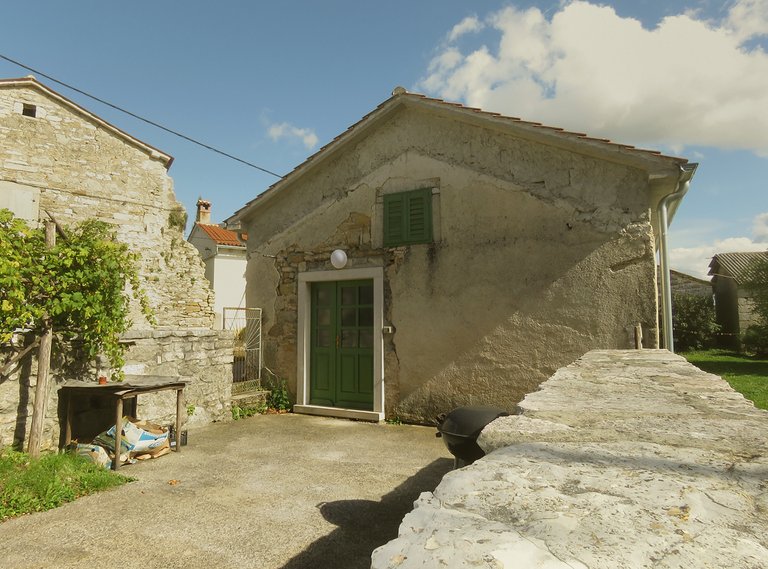
Hm. Have I already said that was a nice and mostly almost bright & partially sunny day? Yep - it was.
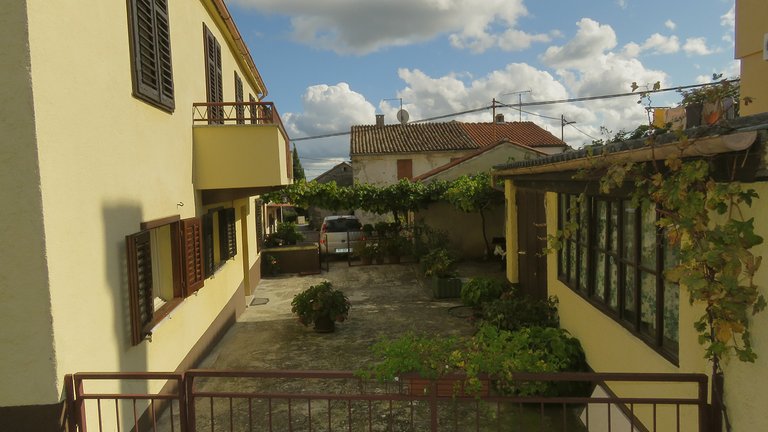
Here you can take a look at some recently built houses.

This is a view of another old neighborhood.
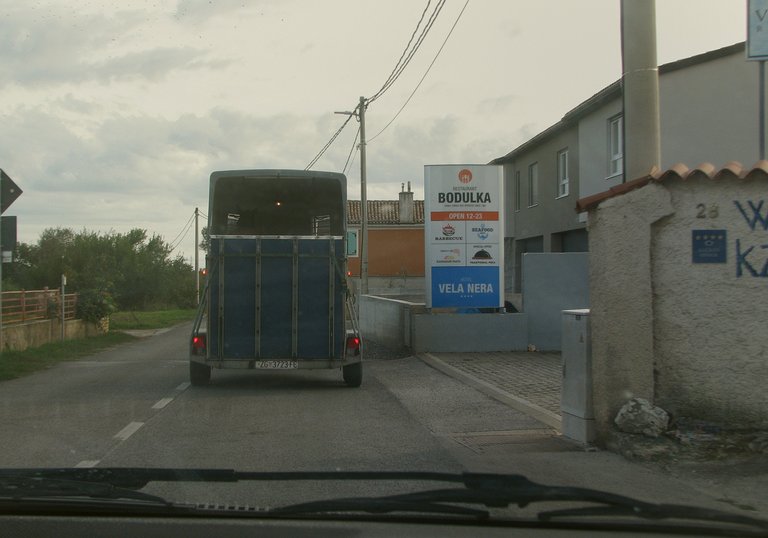
On the way home, a car with the trailer was driving in front of me for a couple of kilometers.
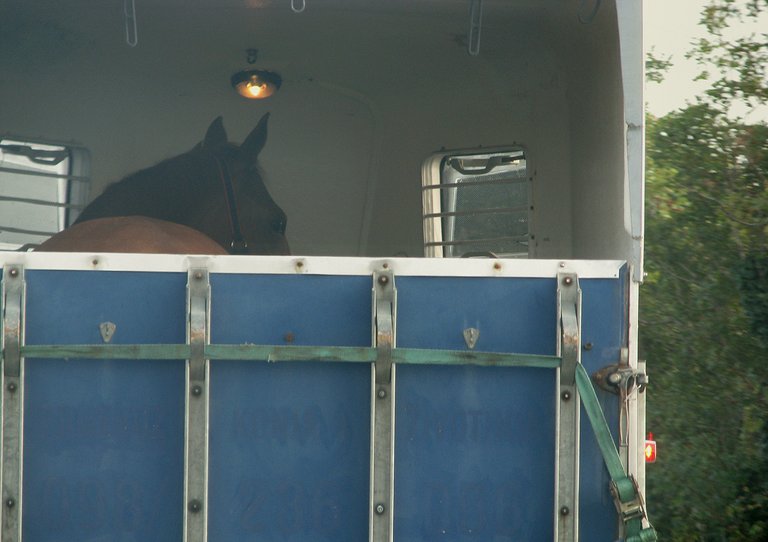
I saw a horse traveling in that trailer.
Before entering the town called Vodnjan, about twenty kilometers from home, I had to stop ...
... and let the train pass.
And that's it. I was home soon. As always in these posts on HIVE, the photographs are my work - THE END.

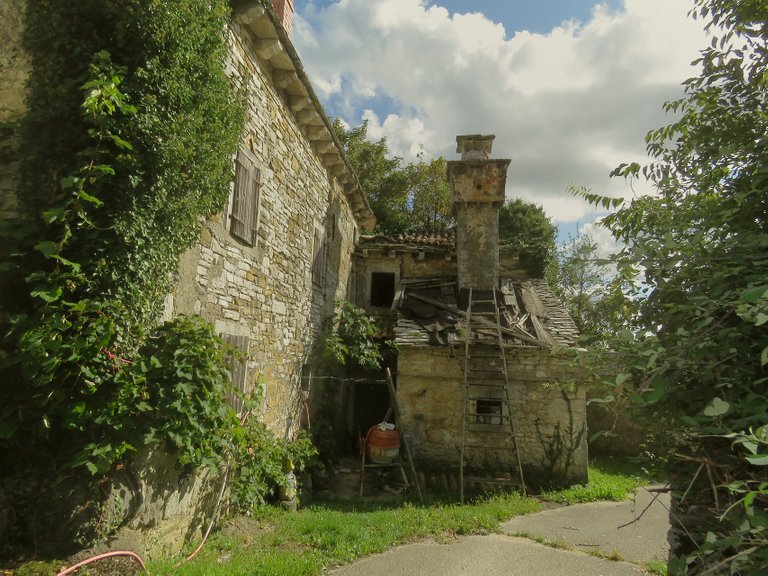
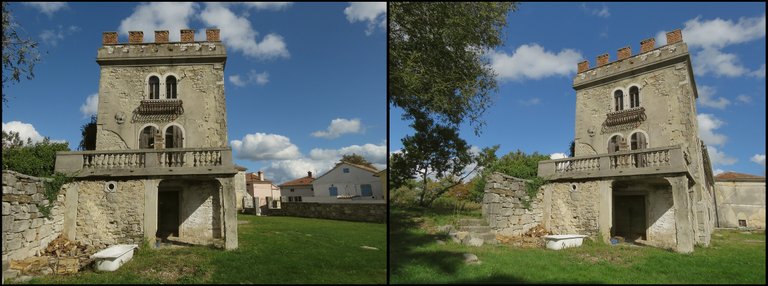


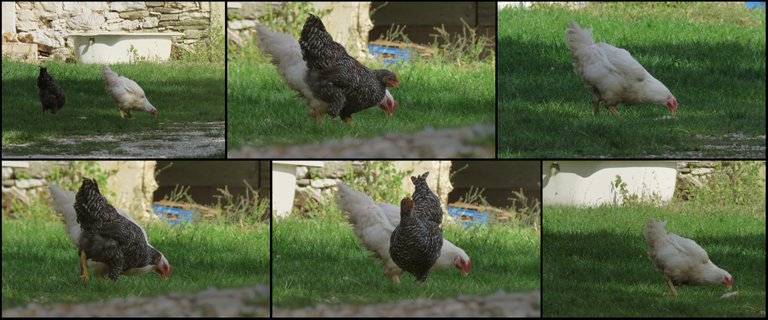
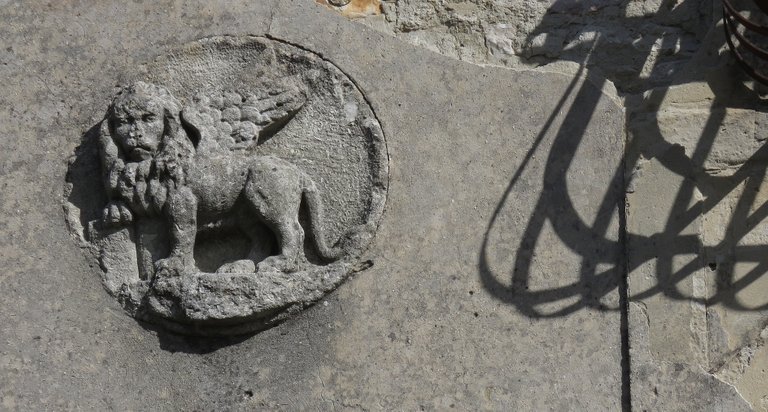


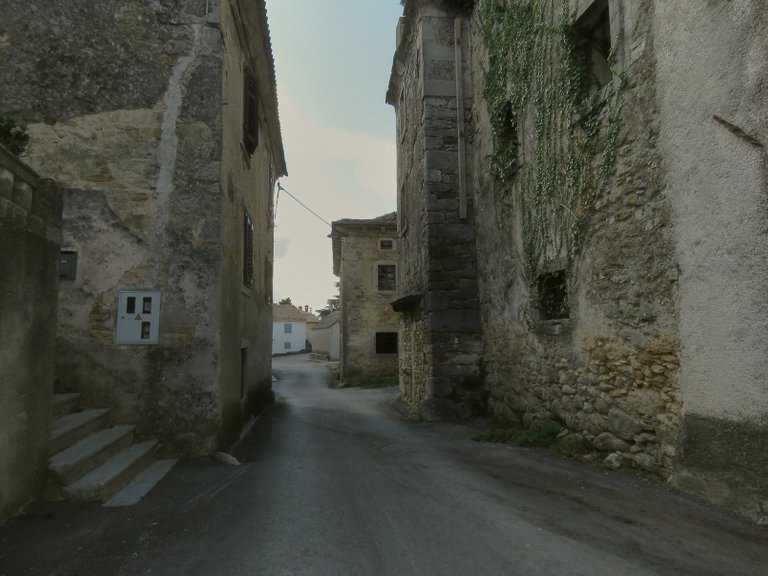
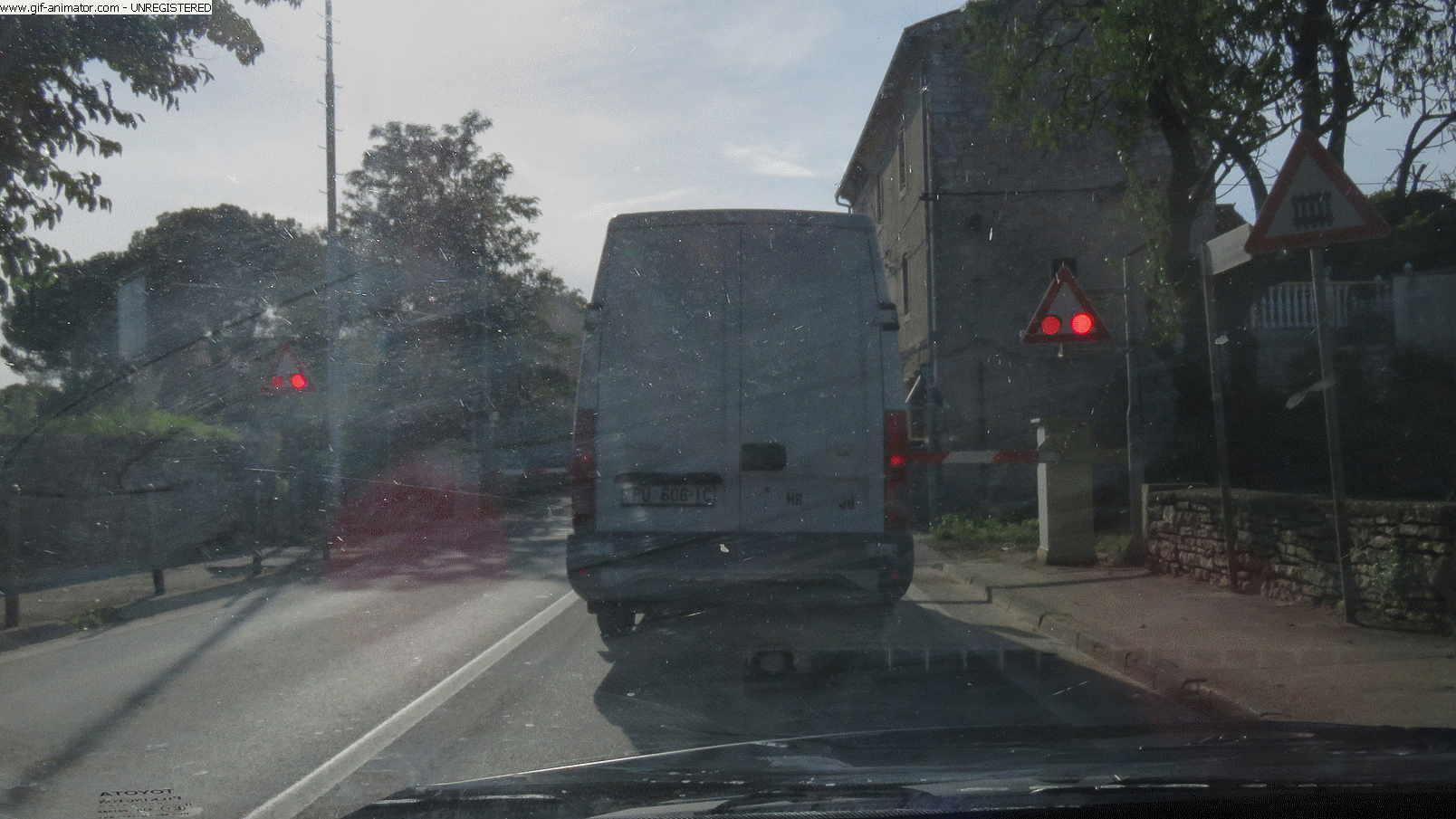
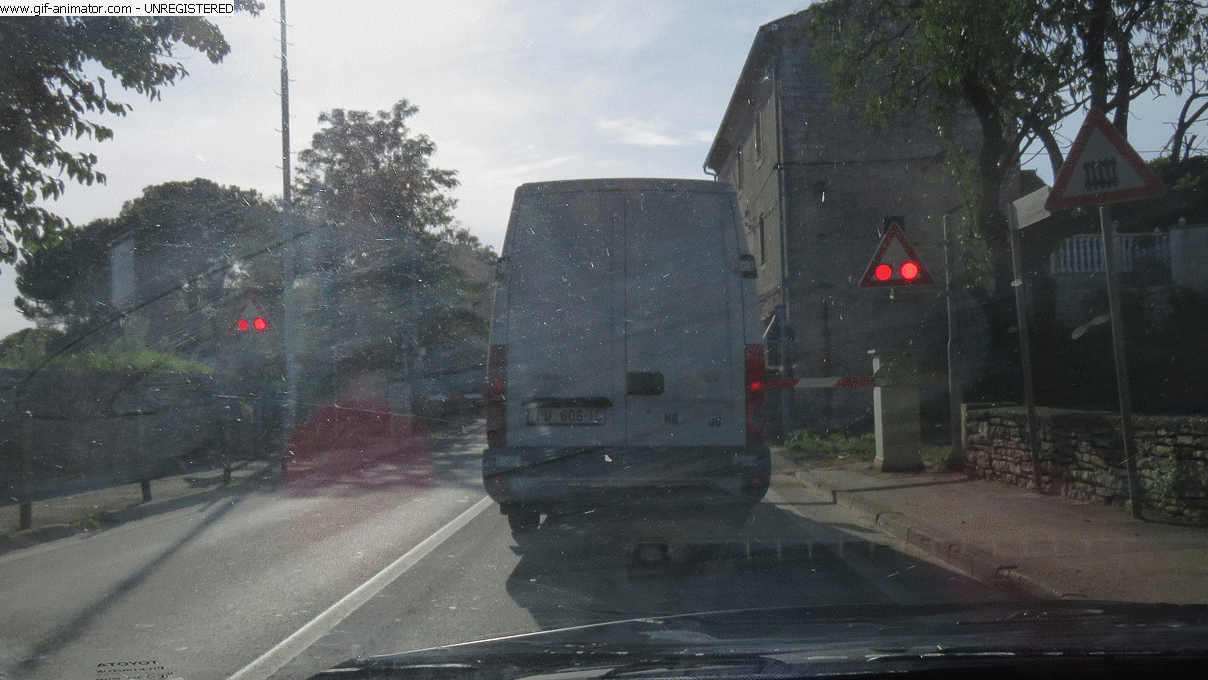
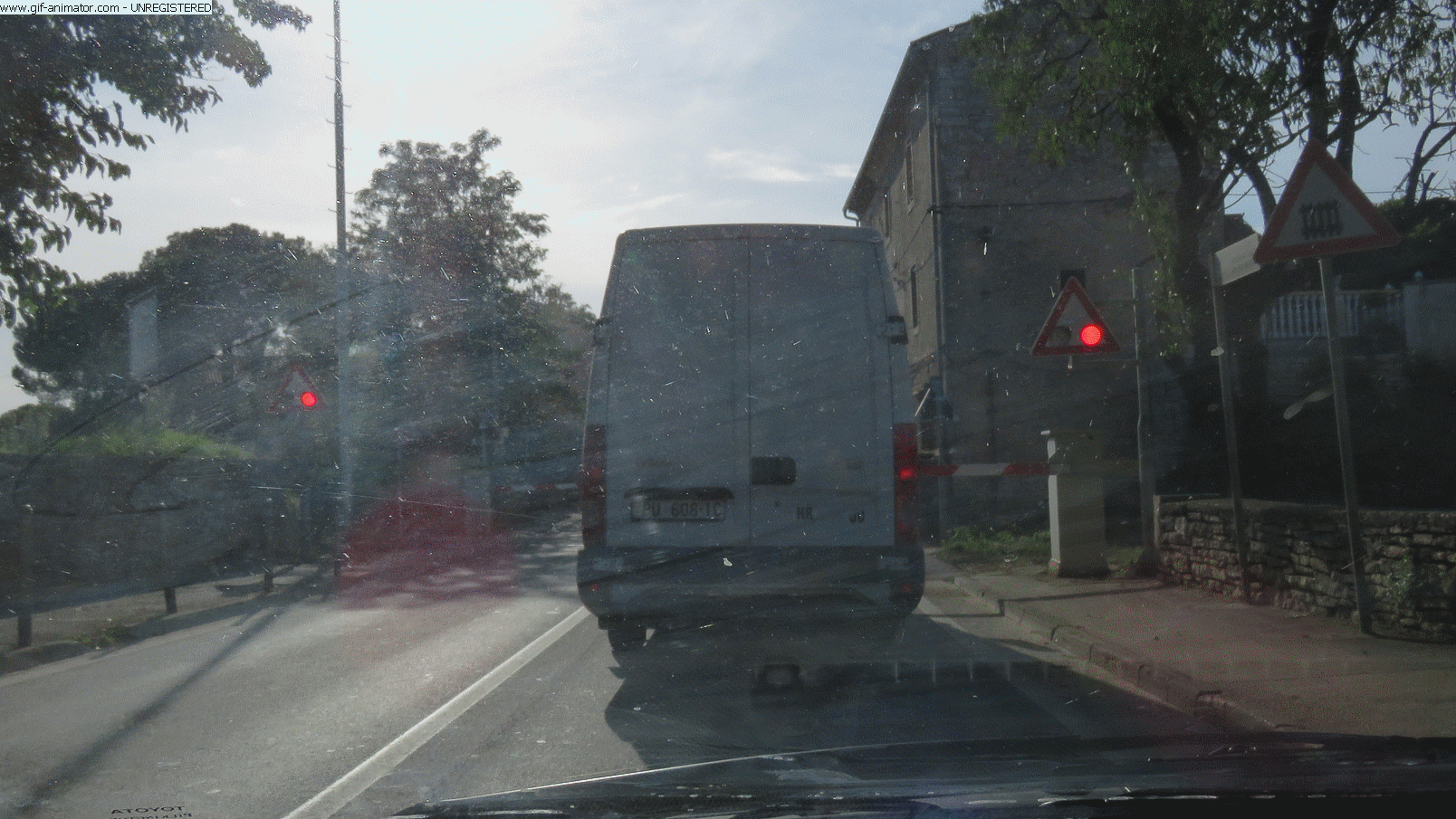
Beautiful old Istrian village. It's pretty cool how you did train .gif. Love the chicken, too!
Great place ... authentic, beautiful architecture, typical Istrian small town. Thanks for sharing, @borjan. I see there is still so much for me to see around Istria.
Yes :) fortunately, there is plenty to explore in a small area.
This place is so peaceful, for me it's like a picture. Do you often come here to visit alone or with friends? @borjan
Not very often. A couple of times in t the year.
Massive tour I must say.
I was expecting to see them holding a gun 😄
:D The guardian chicken can spit the grains at high speed, like bullets ... and they use the eggs like grenades!!! 😁🐣🐤🌽😂
Haha.., I’d love to see this as a game. Maybe. Blockchain game and preferably built on Hive. 🤤
:D
I love that the town looks so beautiful and peaceful. Is that a tourism town or just a normal one? @borjan
It's just a normal one. There is very little tourism in the inland of this region, only along the coastline tourism is a massive industry.
small village but looks special, i see some pictures it seems the village is very clean,
A pleasant trip is a journey that shows the rarely seen and admires it, I saw it on your trip, saw the buildings in the countryside, it was very pleasant. 🤗🤗🥰🥰
All the pictures you show look so amazing
Thank you :)
You're Welcome 🤝
Nowadays I live in a small dead end village in Hungary. I hear them quite often. If the chicken is something that you love to hear, then a moving to live in a village is usually the best choice.
Greetings from Hungary.
Greetings from Croatia.
True :) in villages, you can always see and hear some chickens. Like pigeons in the city. When I was a kid this place where I live was a village. I had also chickens in the yard. Some neighbors had pigs. One of them, a couple of goats. Then through the years, that village turned into a tourism-only small town, and those domestic animals disappeared.
wow it shows that you worked a lot on this post, your photos fascinate me, good content, thanks for sharing !! :)
You have visited a beautiful village. The environment of the village is extraordinary. Especially the village buildings still look very beautiful. You've collected a lot of great photography and shared them with us. Thanks
Thank you :)
wow..amazing, a village with very unique buildings. I like traveling virtually through the photos you show. i like it very much, very good job 👍👍
Thank you :)
you have a lot of sides to a very good, focused style of photography and I really like photography some of the concrete of the building bricks.
amazing work friend.
Thank you
Amazing clicks❤️👌
Thank you.
Beautiful🧡
Congratulations, your post has been added to Pinmapple! 🎉🥳🍍
Did you know you have your own profile map?
And every post has their own map too!
Want to have your post on the map too?
Thank you :)